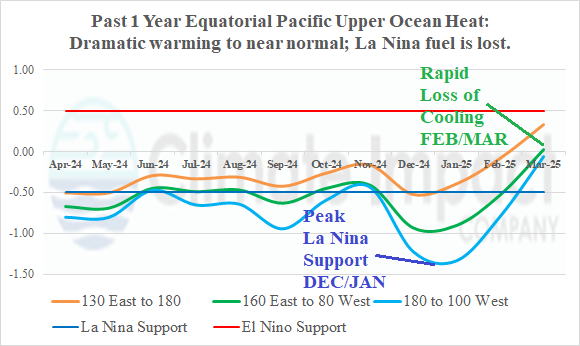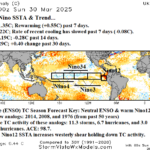
If Warm Nino12 SSTA Region Persists, Hurricane Activity Suppressed
03/31/2025, 1:07 pm EDT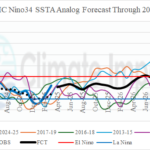
Most Likely: Neutral ENSO 2025; El Nino 2026
04/08/2025, 5:43 am EDT 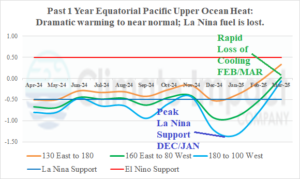
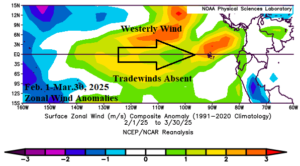
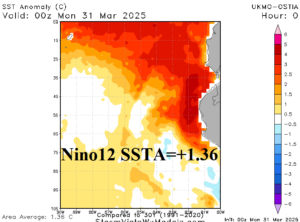
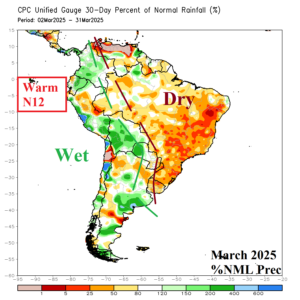
Fig. 1-4: The monthly upper ocean heat anomalies across the equatorial Pacific Ocean for the past 12 months, zonal wind anomalies across the eastern tropical Pacific for the past 2 months, daily Nino12 SSTA, and 30-day percent of normal rainfall in South America.
Discussion: During FEB/MAR 2025, the upper ocean heat anomalies across the equatorial Pacific Ocean warmed dramatically (Fig. 1). The dramatic warming followed a cool peak in support of the 2024-25 La Nina episode. The warming was enabled, in part due to a 2-month long period of dissipated trade winds across the tropical East Pacific off the northwest coast of South America (Fig. 2). The subsurface warming was accompanied by an El Nino-like warming of the Nino12 SSTA region where daily analysis reveals a robust 1.36C warm anomaly (Fig. 3). One influence on climate brought on by the warming waters off the northwest coast of South America is a wet bias during the past month across western South America compensated for by an enhanced dry climate in Brazil (Fig. 4) enhancing drought.

